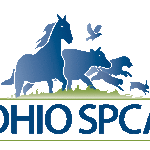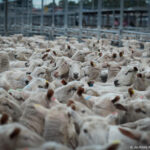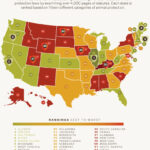In the tapestry of our neighborhoods, each thread represents a unique life—human and non-human alike. Just as the fabric is colorful and intricate, so too are the stories of the animals who share our spaces. Yet, within this vibrant community, there exists a darker narrative, one that speaks of negligence and cruelty. Animal cruelty, a blight on our moral landscape, often lurks in the shadows, unnoticed by those who could make a difference. However, the eyes of the vigilant can illuminate these hidden horrors, transforming silence into action. The act of reporting animal cruelty can feel daunting; yet, it is possible to navigate this terrain with both courage and anonymity.
Understanding the gravity of animal cruelty is the first step toward combating it. In essence, animal cruelty encompasses a wide range of abusive behaviors—from neglecting the basic needs of pets to acts of violence against wildlife. Recognizing the signs is crucial; these may include physical harm, poor living conditions, excessive barking or distress, and malnutrition. Abused animals often wear invisible scars, their trauma etched in behaviors that signal their suffering. Thus, arming oneself with knowledge equips one to confront these injustices.
Once the decision is made to take action, the next step is to gather information meticulously. Think of this process as assembling pieces of a puzzle—each detail contributes to a clearer picture. Document what you observe: take notes on the time, location, and nature of the abuse. Photographs serve as invaluable evidence, capturing the plight of an animal in ways words often cannot. This documentation serves as a beacon, guiding authorities to the scene of cruelty and enabling them to act decisively.
It’s a common misconception that reporting animal cruelty must be done publicly; in reality, many avenues allow for anonymity. This anonymity is not merely a shield for the witness but also a safeguard for the animal involved. Depending on your jurisdiction, different options exist for reporting. Local animal control agencies, humane societies, and police departments are often the frontline responders to cruelty cases. Researching these agencies in advance streamlines the process when the need arises.
Several organizations provide hotlines where reports can be made anonymously. Call these lifelines, akin to the sirens of rescue ships seeking to save stranded victims at sea. When you make the call, communicate clearly. A succinct account of your concerns, punctuated with the evidence you’ve meticulously gathered, enhances the likelihood of a successful intervention. Your words may serve as a lifeline, pulling a suffering animal from the clutches of despair.
For those who wish to further shield their identity, consider online platforms or mobile applications dedicated to reporting animal cruelty. These digital tools can foster a sense of empowerment, allowing individuals to take action from the safety of their homes. While powered by technology, these channels carry a weight of responsibility—each report sent serves as a thread twisted into the fabric of change.
Even in anonymity, one must remain informed about the follow-up process. Understand that reporting an incident does not always equate to immediate action. Authorities often undergo investigations that require time and thoroughness. As the proverbial gardener tends to the soil before planting seeds, so too must the vigilant observer exercise patience. However, after reporting, there are measures that can be taken to ensure that the case remains on the radar.
Advocacy plays a paramount role in the crusade against animal cruelty. Consider joining forces with local advocacy groups that harbor a shared vision. These organizations often take collective action, applying pressure on local authorities to respond promptly to cases of reported cruelty. United voices resonate louder than solitary cries. Engaging with these networks renders anonymity less daunting—encouraging not only the reporting of cruelties but heightening awareness in your community.
Yet, there lies a challenge in maintaining anonymity without inciting discouragement. The world is fraught with complexities that can minimize the impact of reporting. Responses can vary, and sometimes they may feel inadequate. When faced with such initial setbacks, remember that reporting is an incipient act—the ripple effects can eventually foster profound change. Just as a single drop can create ripples across a pond, your courageous report may inspire others to join the fight and engage in meaningful advocacy.
As the sun sets behind a desolate shelter, one must remember that there is always hope; it often resides in the hands of those willing to speak up. Your anonymity, while offering protection, does not dilute the strength of your message. The struggle against animal cruelty is not solely an individual endeavor; it is a communal responsibility. Together, we can weave a more resilient fabric of compassion and kindness in our shared spaces.
In conclusion, the act of reporting animal cruelty is a testament to our moral obligation to protect those who cannot defend themselves. With the tools of information and anonymity at our disposal, we may illuminate the shadows in our neighborhoods. Stand firm in your resolve, wield your words wisely, and become the voice that echoes through the dark corridors of silence, transforming anguish into actionable change. The fight against animal cruelty begins here—let us not shy away from our duty to safeguard the voiceless and ensure that their stories are heard.








